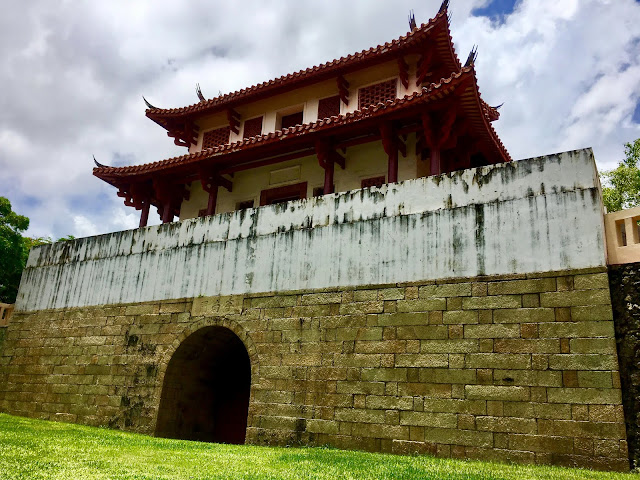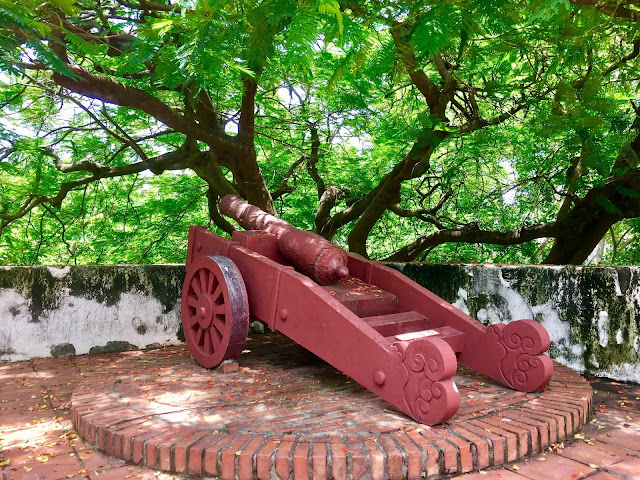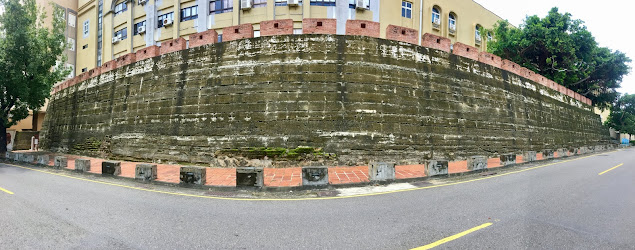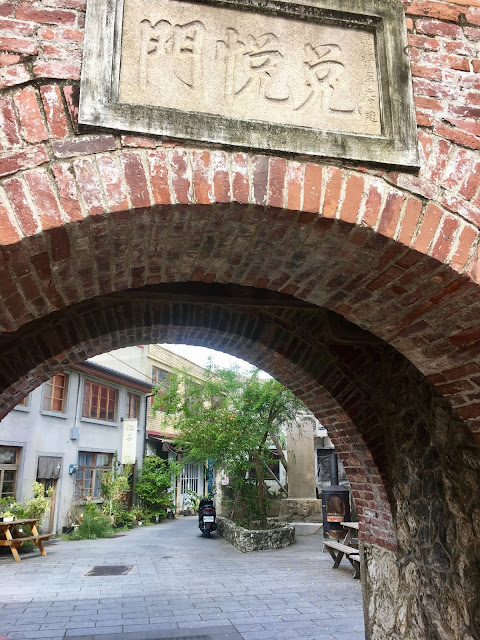History of Fucheng Town
The earliest castle in the Tainan area was a rough but fire-resistant walled city built in 1625 by the Dutch East India Company. A bamboo fence was also constructed around the city streets. The city was situated near the Deqing River to the north and east, the Taijiang River to the west, and the southern part of Pulumin. However, due to a plague outbreak, the bamboo fence eventually collapsed. In 1652, an anti-charge incident led by Guo Huaiyi broke out in Taiwan, prompting the Dutch East India Company to build the Promenade the following year.
Since the Ming Dynasty, Tainan has served as the administrative center of Taiwan. However, during the Qing Dynasty, the government did not prioritize the construction of a city in Taiwan. As a result, the lives of the residents were not adequately protected, and the security of the government office was not guaranteed. Despite repeated petitions from local officials, the Taiwan government did not establish fortifications for 40 years.
Fucheng City, formerly known as Tainan Fucheng City, played a significant role in the history of Taiwan. It was established in 1723 during the Yongzheng period and had a total of 14 gates. However, after Taiwan's separation, the city gradually fell into disrepair. During the urban development period in Taiwan, some of the city walls were demolished to make way for new roads. The city remained intact for about 194 years until its demolition around 1917. The scope of Taiwan's Fucheng City mainly covered the area east of Ximen Road in the central and western districts of Tainan City, as well as a small part of the nearby East, South, and North Districts. The area from Ximen Road to the old settlement of Anping District and Taijiang Inner Sea was excluded.
In 1721, Zhou Zhongyi began constructing a wooden fence around the city. Initially, there were only seven gates built, and the western part of the city was not completely enclosed, leaving the Great West Gate standing alone without connection to the wooden gate. In 1733, efforts were made to strengthen the city's defense. A large fort was built in the position of Xiaobeimen (Small North Gate), later known as Xiaoximen (Small West Gate). Four enemy stations were established outside Daximen (Great West Gate), and two enemy stations were placed at Xiaobeimen. In 1735, the seven gates were replaced with stone gates, and fifteen nests were built. Shrubs with toxic juice were planted in 1759 to further enhance Fucheng's defense. In 1805, the three suburbs of Fucheng were covered with a wooden fence. Fucheng Dadongmen (Great East Gate) also expanded to the East District and Yongkang, increasing the perimeter of the city wall to 8.64km.
In June and August 1867, severe storms caused significant damage to the city. In 1874, the last construction project of Tainan City was carried out. After Japan's rule over Taiwan, the concept of urban planning was introduced. The city walls were considered hindrances to urban development and were no longer necessary for defense. Consequently, most of the city walls in Tainan were gradually demolished during this time. The only remaining parts are Dadongmen, Dananmen, Xiaoximen, and Yingyuemen. The remnants of the city include a small area around the East Gate and a section around the Great South Gate.
Great South Gate (大南門 (寧南門))
The Great South Gate (大南門 or 寧南門) of Fucheng was built in 1725 and is one of the 14 gates of the Taiwanese capital during the Qing Dynasty. Located in the central and western districts of Tainan City, it is a three-level monument. Among the five original gates in Tainan, Ningnan Gate is the only one that remains in Taiwan. Dabeimen, Xiaobeimen, Xiaodongmen, and Xiaonanmen have already disappeared. After World War II, the Great South Gate Tower still stood, but the mid-ridge collapsed after heavy rain in 1963. It was then rebuilt in 1977 and is now equipped with Yuecheng. The inner door of the gate bears three characters, and the outer door reads "South Gate." Behind the door is the Jianxing National Middle School.City wall (台南府城城垣遺跡)
The remains of the Taiwan Fucheng City Wall can be found on Shulin Street, connecting to National Tainan Girl's Senior High School. These remains were restored using ancient methods and closely resemble their original appearance. One section deliberately exposes the internal structure of the wall for observation. This well-preserved section is about 80 meters long and four meters high. From its appearance, it is evident that the wall was constructed using concrete and ancient methods. Given that very few traces of the old city wall can be seen in Tainan today, these remains hold significant historical value.
Duiyue Gate (兌悅門)
Duiyue Gate, also known as the Rocky Gate, was built in 1836. It is located on Xinyi Street and is the only remaining gate. In the past, there were waterways here with ships carrying stones. With the evolution of history and changes in topography, the importance of the city gate has shifted. Tainan had 14 gates in the past. The old city gate and the Wenqing new store on Xinyi Street represent the old town. Several specialty shops have opened on Xinyi Street, making it another historic street in Tainan with a classic appearance.
Xunfang Fortress (臺灣府城 巽方砲台)
Xunfang Fortress, also known as Fangjing Town, is located in the eastern part of Tainan City. It is one of the two towers built during the construction of the East Gate and is the only remaining inland turret in Tainan. The fort was built in 1836 during the Qing Dynasty to protect the inhabitants outside Dadongmen. The turret is made of coral reefs and triple concrete. It has a square shape with arches in the middle and banners on top. Stairs lead to the top of the building, and the original watchtower is still present. The turret is located in the southeast of the city and corresponds to the "巽" position in the Eight Diagrams. During the Japanese occupation, the city was destroyed and the fort was abandoned. After 1949, the Xunfang Fortress was occupied and rented by a Buddhist temple. It is currently used as a pavilion and a storage facility within the temple grounds. As a result, numerous Buddhist scriptures can be found on the fort's front.
Yingchunmen (臺灣府城-東門城(迎春門) )
Yingchunmen, also known as Taiwan's Fucheng Dadongmen, was built in 1725 and was the first of the 14 gates of the Taiwanese capital during the Qing Dynasty. It is the largest existing gate in Taiwan. The Great East Gate was originally built with wooden floors. In 1736, the wooden gate was replaced with a masonry gate. In 1786, the Lin Shuangwen incident broke out in Taiwan, leading to the renaming of the city to Sanhe and the conversion of Dongdong Gate into a two-story tower. Surrounding corridors and additional gates and towers were constructed to strengthen Fucheng's defense capabilities. The area around Dadongmen was densely populated, with residents living alongside the stone walls of the city gate. The city tower was rebuilt in 1975, preserving its ancient features with minor changes to the window design. The government reconstructed Dadongmen to its original form in 1977, and in 1985, it was designated as a three-level monument.
When City was built in 1735, the Xiaodongmen section included Zhengdong Dongshan Temple, Dadongmen, Muzha from Dadongmen, and continued to the right camp. It turned northeast to Xiaodongmen, then went north, and approached the city guard camp near the Great North Gate. Therefore, the Xiaodongmen section consists of two parts between Dadongmen City and Dabeimen City.
The Small East Gate (小東門段城桓殘蹟) is the only remaining section of the city of Taiwan. It is a remnant of the Xiaodongmen section of the Sanhe soil, stretching about 200 meters from Xiaodong Road in the north and about 65 meters in the south. It is hidden beneath dense woods. In 1966, when National Cheng Kung University acquired the campus of Guangfuying District, the southern section of the city was demolished to construct the campus wall.
Chenggong Hall (成功堂舊址)
The remnants of Chenggong Hall in Taiwan's Fucheng Town were established in 1788, with only a few remnants remaining today. Two large sections are reserved as three-level monuments, while another small section is listed as a municipal monument. The city was originally made of clay but was reinforced with triple soil to withstand heavy rains during Tainan's spring and summer. The remaining section is 64 meters long and 5 meters high. In 1982, National Cheng Kung University dismantled about 100 meters of this section to build new classrooms.




















0 komentarze:
Post a Comment